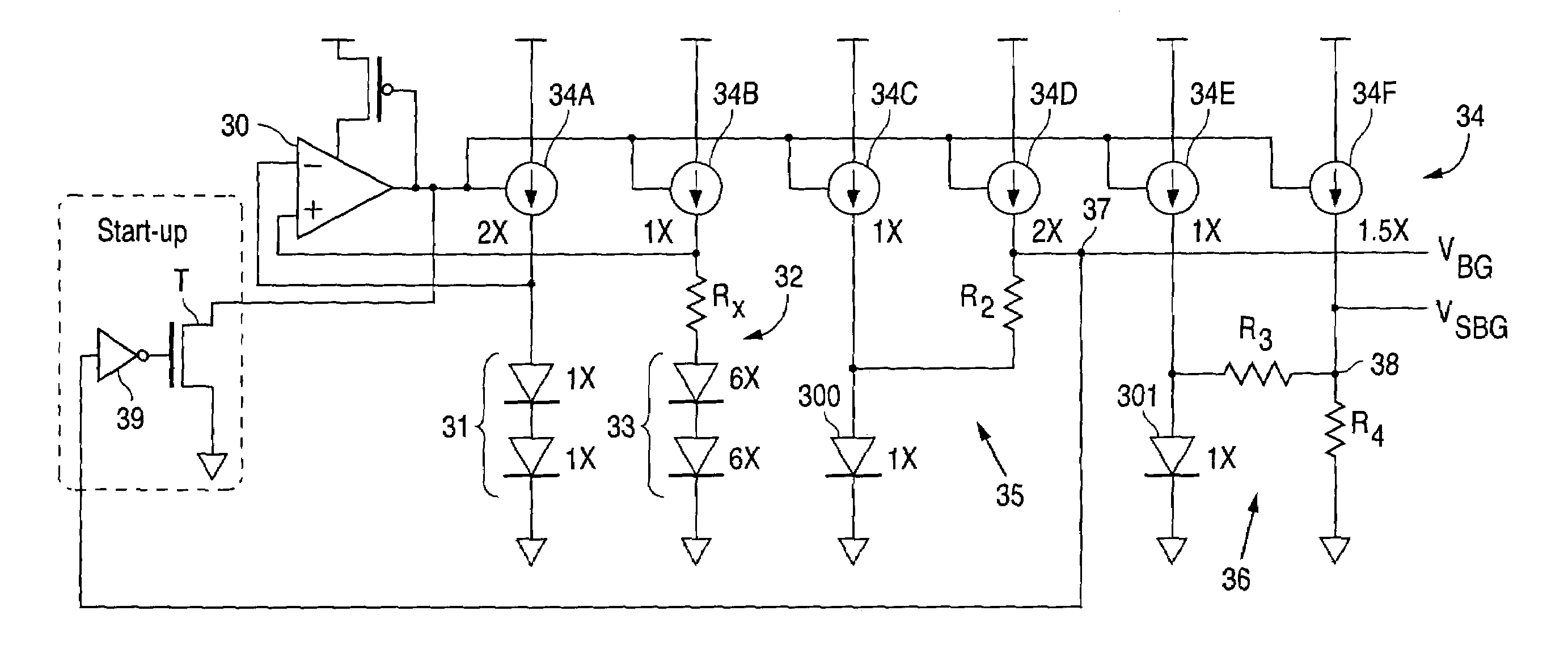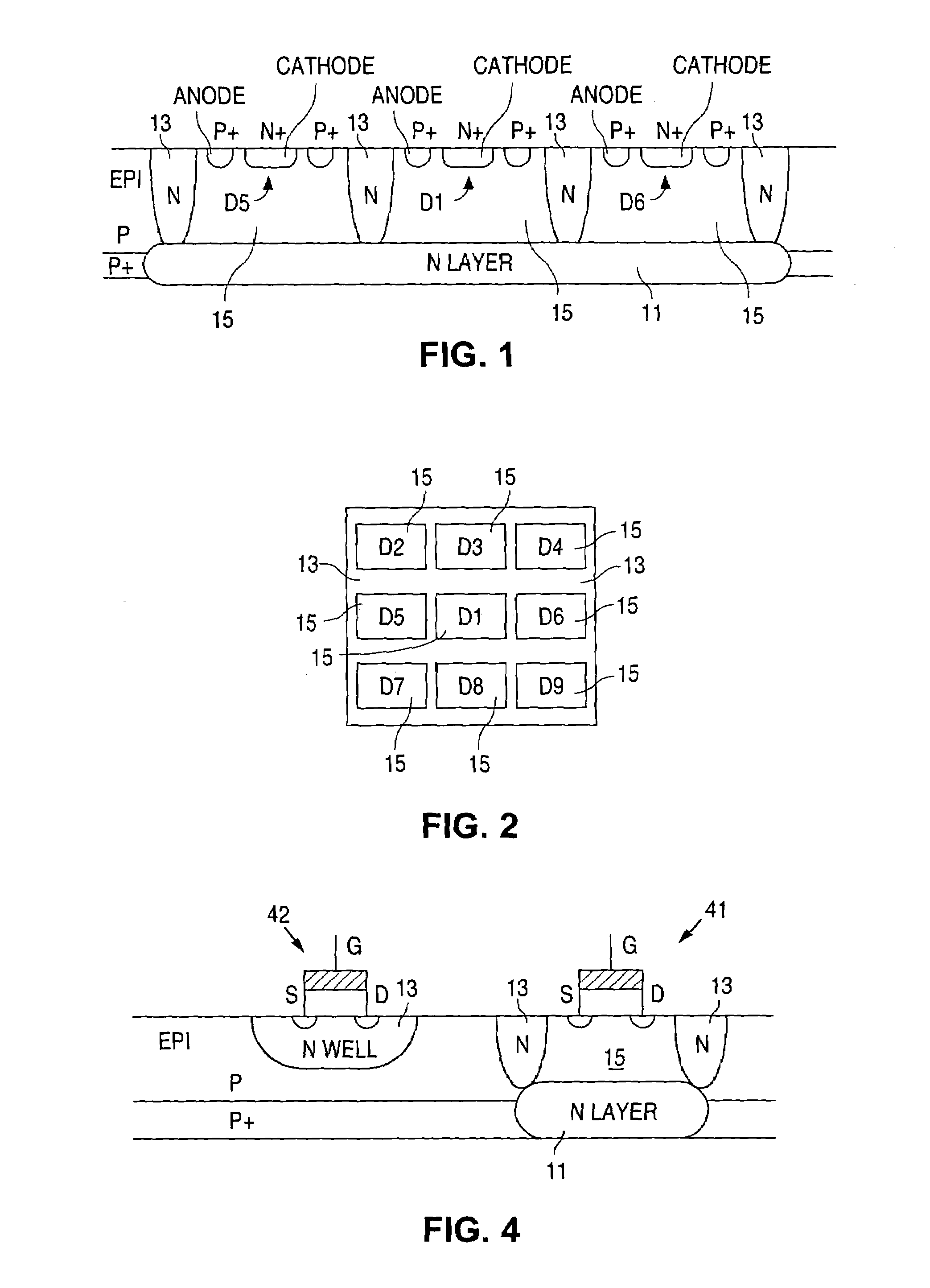Bandgap reference designs with stacked diodes, integrated current source and integrated sub-bandgap reference
a reference circuit and diode technology, applied in the field of electronic circuitry, can solve the problems of small offset error, relatively large error at the amplifier output, and ineffective in some applications, and achieve the effects of improving the performance of the bandgap reference circuit, reducing the input sensitivity of the error amplifier, and increasing the vb
- Summary
- Abstract
- Description
- Claims
- Application Information
AI Technical Summary
Benefits of technology
Problems solved by technology
Method used
Image
Examples
Embodiment Construction
[0015]FIGS. 1 through 6, discussed herein, and the various embodiments used to describe the principles of the present invention in this patent document are by way of illustration only and should not be construed in any way to limit the scope of the invention. Those skilled in the art will understand that the principles of the present invention may be implemented in any suitably arranged system.
[0016]The drop across the resistor in the PTAT (proportional to absolute temperature) leg of a conventional bandgap reference circuit is commonly referenced to as ΔVBE, because it represents the difference between the voltage drops (base-emitter voltages) of the respective diode structures in the PTAT and CTAT (complementary to absolute temperature) legs of the circuit. In a typical conventional bandgap circuit, ΔVBE is around 50 millivolts. The sum of the multiplied ΔVBE and the diode potential (about 0.6 volts) must be equal to approximately 1.22 volts, the bandgap voltage. Accordingly, the ...
PUM
 Login to View More
Login to View More Abstract
Description
Claims
Application Information
 Login to View More
Login to View More - R&D
- Intellectual Property
- Life Sciences
- Materials
- Tech Scout
- Unparalleled Data Quality
- Higher Quality Content
- 60% Fewer Hallucinations
Browse by: Latest US Patents, China's latest patents, Technical Efficacy Thesaurus, Application Domain, Technology Topic, Popular Technical Reports.
© 2025 PatSnap. All rights reserved.Legal|Privacy policy|Modern Slavery Act Transparency Statement|Sitemap|About US| Contact US: help@patsnap.com



